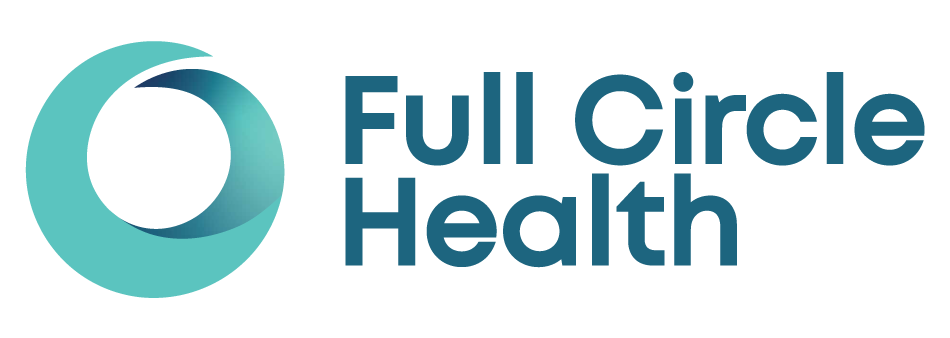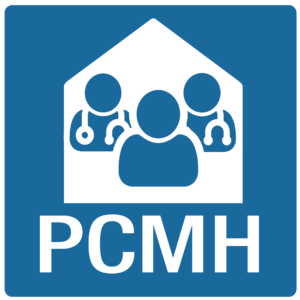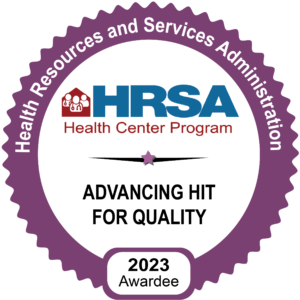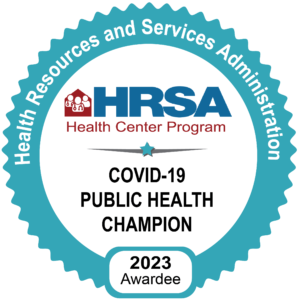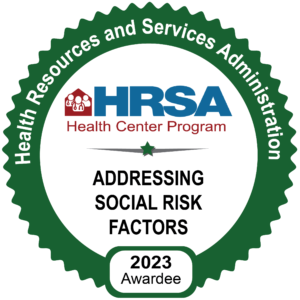Full Circle Health Nampa is designed to prepare residents for practice in any setting, and particularly for full-spectrum care for rural and under-resourced communities. We offer broad-scope, procedural training with a balanced emphasis on inpatient, obstetrics and outpatient care. FCH Nampa is sponsored by Full Circle Health, an institution with 50+ years of expertise in family medicine resident education. Our program offers a vibrant learning platform that is intimate and innovative. Our faculty are passionate about training excellent physicians by creating a trusting environment for our patients in a well-established teaching health center/FQHC. We are excited to achieve osteopathic recognition and enjoy incorporating osteopathic care into our clinic care.
We are supported by St. Luke’s Nampa where residents complete most of their inpatient rotations. Inpatient medicine is scheduled by week alternating with outpatient time, allowing for concentrating inpatient and outpatient experiences, improving continuity of care. Residents are able to customize their education with away and rural rotations to learn how to meet the needs of their future communities. This flexibility in training is critical in building well-rounded, fulfilled physicians.
Locations Legend: SLN = St. Luke’s Nampa | SLRMC = St. Luke’s Boise | FCH = Full Circle Health
PGY-1 Nampa Full Circle Health 1-2 half days of clinic per week |
||
|---|---|---|
| Rotation | Weeks | Location |
| Family Medicine | 2-3 | SLN |
| Adult Medicine | 8-9 | SLN |
| Pediatric Inpatient / Newborn | 6 | SLRMC / SLN |
| Obstetrics | 8-10 | SLN |
| Clinic / Behavioral Health | 4 | FCH |
| Gynecology | 2 | Community |
| Surgery / Procedures | 4 | SLN |
| Outpatient Pediatrics | 6 | Community |
| Geriatrics | 4 | Community |
| Rural | 2 | Idaho |
PGY-2 Nampa Full Circle Health 2-3 half days of clinic per week |
||
| Rotation | Weeks | Location |
| Family Medicine | 4 | SLN |
| Adult Medicine | 5-6 | SLN |
| Obstetrics | 4-6 | SLN |
| Behavioral Health | 2 | FCH / Community |
| NICU | 2 | SLN |
| Night Float | 4-5 | SLN |
| Specialty Selective | 8-9 | Community |
| Emergency Medicine | 4 | SLN |
| Electives | 6-8 | Varies |
| Rural | 4 | Idaho |
PGY-3 Nampa Full Circle Health (Can OB Track) 2-5 half days of clinic per week |
||
| Rotation | Weeks | Location |
| Family Medicine | 2 | SLN |
| Adult Medicine | 6-8 | SLN |
| Clinic / Behavioral Health | 4 | FCH / Community |
| Obstetrics (can track) | 8 or 0 | SLN |
| Night Float | 4 | SLN |
| Pediatrics Inpatient | 2 | SLN |
| Emergency Medicine | 4 | SLN |
| Electives | 6-10 | Varies |
| Rural | 4 | Idaho |
| Specialty Selective | 12-14 | Community |
Our goal is to prepare you to meet the needs of rural and under-resourced communities. Your training will be grounded in a robust continuity clinic experience in an FQHC/PCMH, Full Circle Health. The majority of our inpatient rotations are in the St. Luke’s Nampa Hospital – an 87 bed hospital in Canyon County built in 2017 to meet the needs of a rapidly growing population. Inpatient medicine rotations alternate weekly with outpatient rotations to allow concentrated learning experiences in each location while maintaining continuity. In the 2nd and 3rd years, many rotations are 2 weeks long. This preserves your ability to think across the spectrum of medicine and increases energy and engagement. Continuity clinic ranges from 2-5 half days a week depending on the rotation.
Rotations
As a resident, you will work one-on-one with a faculty preceptor throughout the hospital caring for our clinic patients in OB, newborn, and adult services, including the ICU. This is family medicine across the spectrum. Nights are covered by night float. R1 and R3 years – 2 weeks, R2 year – 4 weeks
We work with internal medicine and family medicine hospitalists to provide inpatient and ICU care. The first half of the year, the resident team consists of three residents, one from each year, working together for a week straight. The second half of the year, a two resident team manages the weekly service. This is a fast-paced service with high quality, evidenced based practices in 12-hour day shifts. R1 year – 8 to 9 weeks, R2 year – 5 to 6 weeks and R3 year – 6 or 8 weeks.
Work with laborists running a busy L&D deck with 14 rooms and 2 ORs. As the unopposed family medicine residents on call, you will be managing the service including delivering babies, managing labors, assisting with C-sections, and staffing triage patients. Half of our delivery suites have imbedded NICU suites allowing care of the family unit. When not on the labor deck, you will work in our own Nampa OB Clinic and outpatient MFM Clinic. Call is 24 hour shifts every 3-4 nights. R1 year – 8 to 10 weeks, R2 year – 4 to 6 weeks, R3 year – if tracking into OB: 8 weeks
We are fortunate to have a regional children’s hospital close by in Boise. You will work with the Full Circle Health pediatric team, St. Luke’s hospitalists and residents from FCH Pediatric residency and Family Medicine residents from Boise, Magic Valley, Caldwell and ISU-Pocatello to learn in-patient pediatric medicine. R1 year – 4 weeks and R2 / R3 years – 2 weeks
You will also spend dedicated time in Nampa on our newborn service, taking care of all babies born in the hospital that week. R1 year – 2 weeks
The Nampa NICU rotation allows the resident to practice neonatal care and effective neonatal resuscitation. This includes rounding with the NICU team and attending all newborn resuscitations. R2 year – 2 weeks
Our surgeons are excited to work with you in the OR and in their clinic to learn the basics of assisting and the work up of the surgical patient. You will also spend time with anesthesia learning intubations and with your family medicine faculty in procedure and scopes clinic. R1 year – 4 weeks
We can track residents into longitudinal scope training and longitudinal vasectomy training if you are interested in becoming proficient in these procedures
Our hospital has a very busy ED staffed by Emergency physicians who are engaged in teaching. We see a high percentage of children in our ED given the average age of our population in Canyon County. R2 and R3 years – 4 weeks
On Night Float, you will cover the two teachings services overnight (FMS and inpatient medicine). This includes cross-cover pages, admissions, and OB coverage for FCH patients and emergency c-sections if no OB resident is on overnight. R2 and R3 years – 4 weeks
The Nampa Residents participate in a three-year Behavioral Health curriculum that combines block-based rotations and ongoing training through didactics and hands-on patient care in clinics with integrated behavioral health. This curriculum equips family physicians to deliver comprehensive, patient-centered care by developing skills to address the biological, psychological, social, and spiritual needs of individuals, couples, and families within an interprofessional team. The program focuses on innovative models that connect community needs with the growth of learners. You will work with psychologists, psychiatrists and MSWs. 2 weeks each year and longitudinally throughout.
*Longitudinal Geriatrics: You will see geriatric patients longitudinally including multiple settings, nursing homes, assisted living facilities, home visits and you will work with geriatricians in our own clinic.
*Longitudinal Gynecology: A variety of half days with local gynecologists, and a specialty clinic within our practice staffed by a local OB-GYN
*Longitudinal Pediatric outpatient: You will work with local pediatricians and specialists, including school-based clinics.
*R1 year – 2 weeks for each category. R2 and R3 years – additional opportunities during specialty selective until ACGME requirement are met.
Over all, the remainder of your Subspeciality time will be a variety of half days with adult subspecialists based on your preferences. A component will be Sports Medicine which is a variety of half days including working with an FM-SM fellowship trained physician in our own clinic focusing on ultrasound-guided procedures, as well as sports medicine and orthopedic physicians in the community. You will attend sporting events and help with community physicals.
Longitudinal Scopes: If you are interested in being proficient in primary care endoscopy, you can opt into a longitudinal scoping track to ensure you get sufficient experience. This is similar for vasectomy interested residents.
It is hard to learn medicine if you do not go out and try on your skill set. Doing a rural rotation allows you to see what rural medicine is like, see some of this beautiful state and experience the breadth of family medicine. We send you out into the rural communities of Idaho for R1 year – 2 weeks, R2 and R3 years – 4 weeks
These allow you to gain more knowledge in ways that help you grow and prepare you for your future practice. You have 4 weeks in R2 and R3 year that can be spent away from the program, either for international or job preparation rotations. R2 year – 6 to 8 weeks and in R3 year 6 to 10 weeks
Longitudinally spread through your three years. You will be paired with a community organization to develop a project based on the needs of the community and organization that aligns with your interests and the needs of the organization. Look under the community tab for a list of the organizations with which we are currently partnering. Approximately about 1 half day a block throughout residency.
St. Luke’s Children’s Hospital
At St. Luke’s Children’s Hospital, the only children’s hospital in Idaho, more than 150 skilled pediatricians and pediatric specialists work with referring physicians from around the region to provide high quality care. They have a staff of over 400 nurses, therapists, and other dedicated pediatric caregivers.
All children should have access to the highest quality health care services available, regardless of their condition or their family’s ability to pay. Like all children’s hospitals, St. Luke’s is committed to high quality, cost-effective clinical care, advocacy for children and families, education, and research.
Location & Contact Info
190 E. Bannock St.
Boise, ID 83712
208-706-KIDS (5437)
Directions/Map
Visit Website
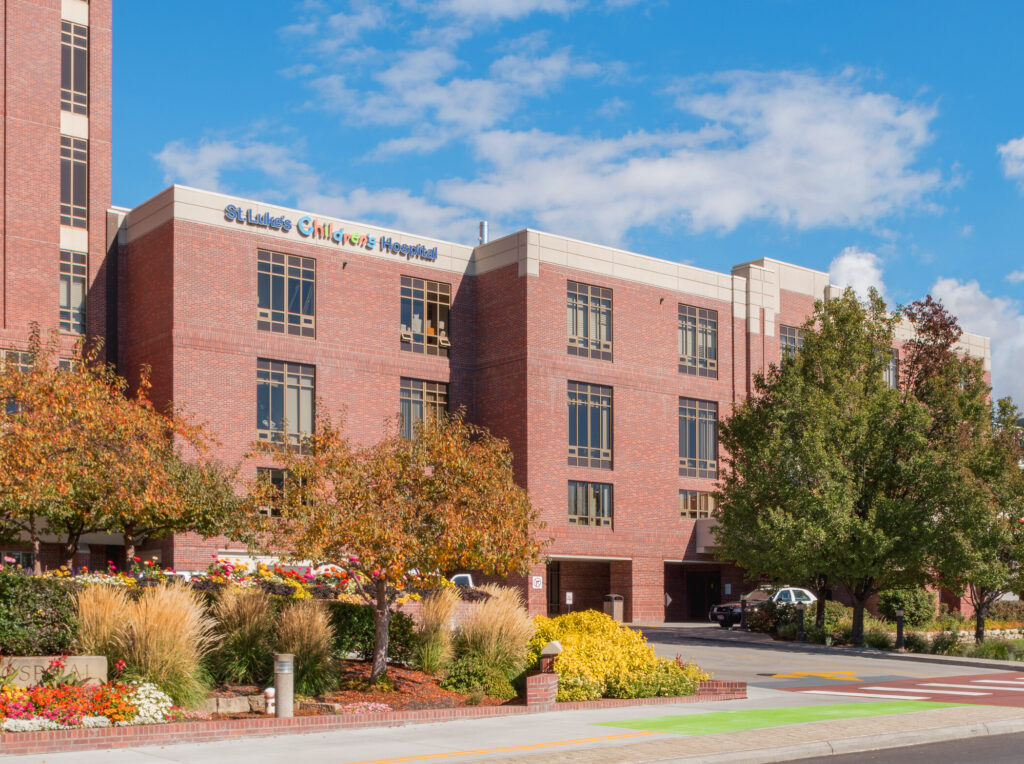
Full Circle Health – Nampa South
Our Family Medicine Residency training program is dedicated to becoming your patient centered medical home. We provide excellent patient care along with offering superb clinical training for medical residents who are becoming Family Medicine Physicians. At Full Circle Health you will be cared for by a medical team consisting of a physician and a resident physician who will be your primary care providers in conjunction with a mid-level provider (PA, NP, and CNM), psychologist, dietician, clinical pharmacist, community health workers, and care managers. We are a tight-knit team that enjoys teaching and caring for those that need us.
Location & Contact Info:
Full Circle Health – Nampa South
215 East Hawaii Avenue, Suite #140
Nampa, ID 83686
208-514-2529
Directions/Map
Visit Website

Full Circle Health – Nampa North
Located in the campus of the St. Luke’s Nampa Medical Center, this clinic will be where half of each residency class will experience their continuity panel. Fellows will have continuity clinic here as well. Both residents and fellows will have access to an inter-professional team including pharmacists, psychologists, dieticians, and community health workers.
St. Luke’s Nampa Medical Center demonstrates their commitment to the city of Nampa and the growing population of Canyon County. The new 87-bed hospital offers a fully equipped emergency department, family suites for new mothers and their babies, a newborn intensive care unit (NICU), children’s services with outpatient sub-specialists, additional heart and orthopedics services, and an intensive care unit.
Location & Contact Info:
Full Circle Health – Nampa North
9850 W St Lukes Dr., Suite #329
Nampa, ID 83687
Directions/Map
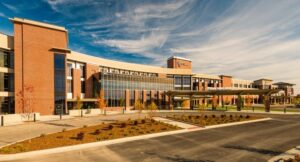
The Nampa Residency is an active member of the ITHS WWAMI Region Practice and Research Network.
Recent Scholarly Activity Highlights from the Nampa Residency Faculty and Residents:
-
- Holmes, R., Cooperrider, J. & Florence, J. (2025). The Nerve of it All: Solving a Deep-Seated Leg Pain Mystery. Poster presentation at AMSSM Annual Conference, Kansas City, Missouri.
- Bockelie, S. (2024). El impacto de naloxona accesible y gratuito en las comunidades de Idaho: un proyecto comunitario en progreso [Impact of low-barrier naloxone on communities in Idaho: a community project in progress]. Poster presentation at I Congreso Internacional de Egresados, II Asemblea Internacional de la SMI-ELAM, Havana, Cuba.
- Holmes, R., Florence, J. & Cooperrider, J. (2004). A Not-So-Humerus Cause of Post-Traumatic Shoulder Pain: A Case Report. Poster presentation at AMSSM Annual Conference, Baltimore, Maryland.
-
Johnson, A., Bennett, K., Verrall, A., Deloya, E., Linares, A., Ramsbottom, M., Santos, J., Cochrane, B., Vitiello, M., Phelan, E. & Cole, A. Improving age-friendly advance care planning in primary care: Outcome from a Pacific Northwest learning collaborative. Journal of the American Geriatrics Society. Doi: https://doi.org/10.1111/jgs.19033
- Holmes, R., Florence, J., & Cooperrider, J.
(April, 2024). A Not-so-Humerus Cause of Poast-Traumatic Shoulder Pain: A
Case Report. Poster presentation at AMSSM Annual Conference –
Baltimore, Maryland.
-
- “Scholarship, Don’t Call it Research”; Sarah Cole, Kristina Diaz, and Kim Stutzman (March 26, 2024) Residency Leadership Summit.
-
- “Congratulations! You are a New Program Director”; Kim Stutzman, Kristina Diaz, and Deborah Clements (March 4, 2023; March 25, 2024) Residency Leadership Summit.
-
- Wei, A., Waterman, S., Motanic, K. (December 2023).
Comparing screening for gestational diabetes mellitus, does the
one-step or two-step approach lead to improved maternal and newborn
outcomes? HelpDesk Answers, Evidence Based Practice Volume 26 Number 12.
- Wei, A., Waterman, S., Motanic, K. (December 2023).
-
- Johnson, A., Cole, A., Linares, A., Bojkov, E., King, I.,
Hannon, P. (November 2023). Assessing and Addressing Social
Determinants of Health in Healthcare Settings in the Northwest United
States. Oral Presentation at NAPCRG. San Franscico, CA.
- Johnson, A., Cole, A., Linares, A., Bojkov, E., King, I.,
-
- King, I. & Carr, G. (October
2023). Implementation of an Interprofessional Case Conference to Improve
Patient Care and Teamwork. Oral presentation at CFA Annual Conference.
Phoenix, AZ.
- King, I. & Carr, G. (October
-
- Crouch, R. & King, I.
(September 2023). Standardized Behavioral Health Intervention as Routine
part of Prenatal Care. Oral presentation at STFM CQI. St. Louis, MO.
- Crouch, R. & King, I.
-
- Laskow, B., King, I., & Carr, G. (September
2023). Interprofessional Clinic to Improve Access and Education for
Gender Affirming Care, Opioid Use Disorder, PrEP, and Hep C. Oral
presentation at STFM CQI. St. Louis, MO.
- Laskow, B., King, I., & Carr, G. (September
-
- Johnson, D. (October, 2022). Charlas de Salud:
Community Conversations for Migrant Farmworkers. Poster Presentation at
the 17th Annual Latino Health Forum, Seattle, WA.
- Johnson, D. (October, 2022). Charlas de Salud:
-
- Laskow B. & Celestino R. (May, 2022). Bridging
the Health Equity Gap: Solutions for the Latinx Community. Presentation
at the Idaho Academy of Family Physicians 2022 Conference. Sun Valley,
ID.
- Laskow B. & Celestino R. (May, 2022). Bridging
-
- King I. (May 2022). Resident and Faculty
Perception of Programmatic Wellness Assessment and Culture. Poster
presentation at Society of Teachers of Family Medicine Spring
Conference. Indianapolis, IN.
- King I. (May 2022). Resident and Faculty
-
- Ho T., Laskow B., & Zaballa A. (May, 2022).
Antiracism Curriculum in Family Medicine Residency-Does it Exist? Oral
presentation Society of Teachers of Family Medicine Spring Conference.
Indianapolis, IN.
- Ho T., Laskow B., & Zaballa A. (May, 2022).
-
- Weidner A, McGuire M, Stutzman K, Glass J, Stevens
NG. The Interests of Family Medicine Residents in Future Faculty
Positions Across the Senior Year. Journal of Medical Education and
Curricular Development. January 2021. doi:10.1177/23821205211059667
- Weidner A, McGuire M, Stutzman K, Glass J, Stevens
-
- Griesbach S, Theobald M, Kolman K, Stutzman K, et
al. Joint Guidelines for Protected Nonclinical Time for Faculty in
Family Medicine Residency Programs. Fam Med. 2021;53(6):443-452. https://doi.org/10.22454/FamMed.2021.506206.
- Griesbach S, Theobald M, Kolman K, Stutzman K, et
-
- Rue K, Stutzman K, Chadek M, “The Value of Osteopathic Recognition”, Annals of Family Medicine. January 2021, 19 (1) 86-87; DOI: https://doi.org/10.1370/afm.2663
-
- Griffin, A. (April, 2021). Healthcare for the
migrant family: Challenges and future directions. Poster presentation at
University of Washington Department of Family Medicine Regional
Conference.
- Griffin, A. (April, 2021). Healthcare for the
-
- Subramanyam, S. (April, 2021). Establishing a
school-based clinic for a rural and underserved population in Idaho.
Poster presentation at University of Washington Department of Family
Medicine Regional Conference.
- Subramanyam, S. (April, 2021). Establishing a
-
- King I, Christopher A, Hansen A et al.
Interprofessional grant writing seminar for early career faculty in a
small, isolated teaching center. F1000Research 2020, 9:1208 (https://doi.org/10.12688/f1000research.26092.1)
- King I, Christopher A, Hansen A et al.
-
- Subramanyam, S. (October, 2020). COVID-19 and
ethnicity in a mixed rural-urban setting in southwest Idaho. Poster
presentation at Family Medicine Experience Conference.
- Subramanyam, S. (October, 2020). COVID-19 and
-
- Longley, E., Angel, J., & Davies, D. (2020). In
women with prelabor rupture of membranes at term, is oxytocin more
effective than misoprostol in preventing chorioamnionitis? HelpDesk
Answers, Evidence-Based Practice.
- Longley, E., Angel, J., & Davies, D. (2020). In
-
- Stutzman, K. & King, I. (May, 2020). Connecting Family Medicine Residents with their Community. Oral presentation at STFM annual conference.
-
- Kern, J., Waterman, S., Henderson, J. (March 2020).
Does early integration of palliative care services improve outcomes for
patients with advanced cancer over usual care? HelpDesk Answers,
Evidence-Based Practice
- Kern, J., Waterman, S., Henderson, J. (March 2020).
-
- Stutzman K, Karpen R, Naidoo P, Toevs SE, Weidner
A, Baker E, & Schmitz D. (2020). Support for rural practice: female
physicians and the life-career interface. Rural Remote Health, 20(1).
doi: 10.22605/RRH5341.
- Stutzman K, Karpen R, Naidoo P, Toevs SE, Weidner
-
- Fisher, A., Argyle, A., Keefer, A., King, I.,
Lowther, D., & Tivis, R. (2019). Veteran and learner outcomes of
interprofessional trainee-led group medical visits. Journal of
Interprofessional Education & Practice, 18. doi:
10.1016/j.xjep.2019.100292
- Fisher, A., Argyle, A., Keefer, A., King, I.,
-
- Fisher, A., King , I., Smith, C. (October, 2019).
Everyone is a Teacher: Multi-Site Feasibility Study of a Clinic-Based
Interprofessional Assessment Tool. Presentation at the Collaborating
Across Borders VII Conference. Indianapolis, ID.
- Fisher, A., King , I., Smith, C. (October, 2019).
-
- Stutzman, K. & Schmitz, D. (2015, 2016, 2017,
2018, 2019). Patient- and Community-Centered Care in the Rural
Landscape: Is It Great to Be a Small-Town Doc? Presentations at AAFP
National Conference for Medical Students and Residents
- Stutzman, K. & Schmitz, D. (2015, 2016, 2017,
-
- Weppner, W., Tivis, R., Naidoo, S., Inouye, L. Krug, M., & King, I.
(May, 2019). Interprofessional Quality Improvement Projects: Using QI
principles to develop a robust QI curriculum. Poster presentation at
the National conference for the Society for General Internal Medicine.
Washington D.C.
- Weppner, W., Tivis, R., Naidoo, S., Inouye, L. Krug, M., & King, I.
